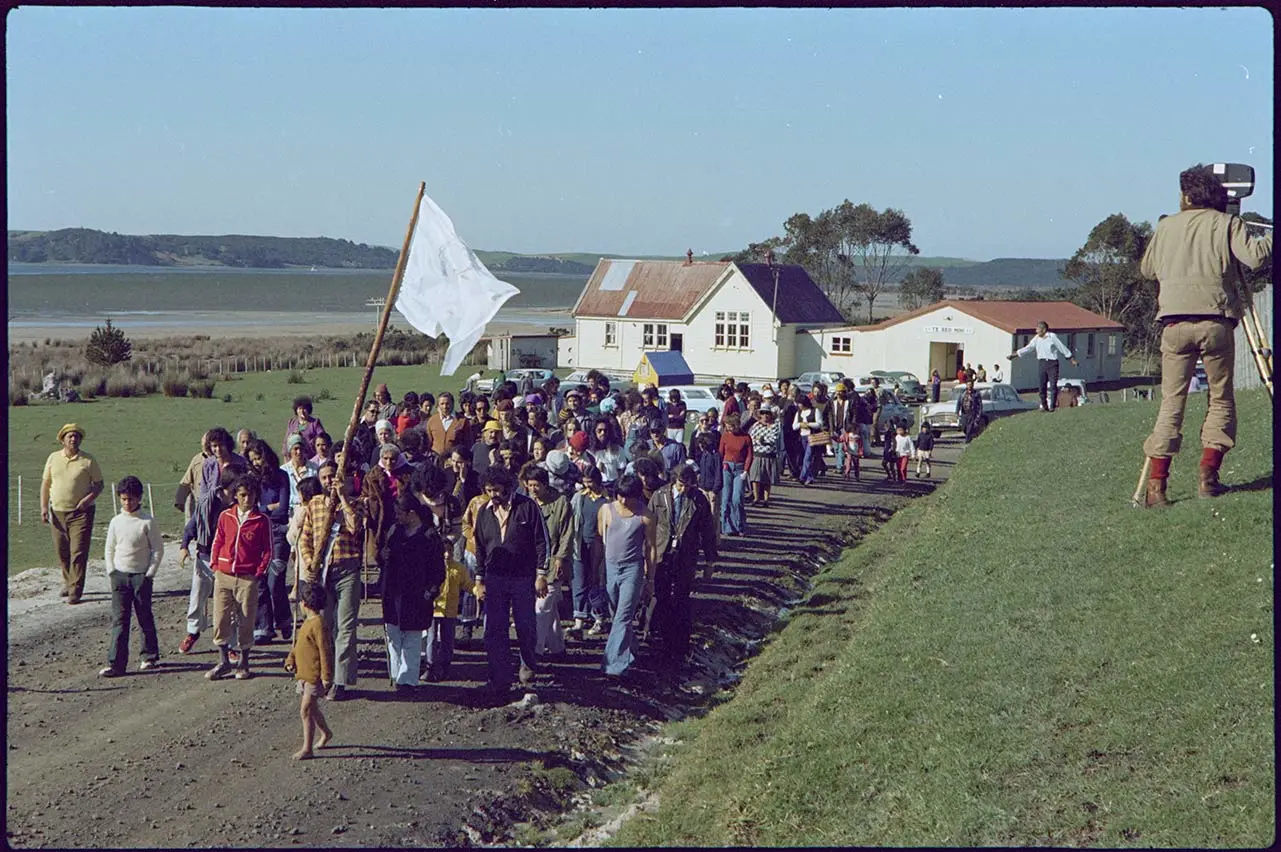Read a story about the 1975 Māori Land March
Christian Heinegg’s photograph records the moment the Māori Land March set off from Te Hāpua in the Far North of Aotearoa on 14 September 1975. The march was organised by Te Rōpū o te Matakite o Aotearoa (the Group of Visionaries) to protest the loss of Māori land. Unified under the slogan ‘Not One More Acre’, the hīkoi opted not to use banners or signs, only a pouwhenua, or land-marker post, and a flag, carried in this photo by Cyril Chapman.
The marchers travelled through the North Island under the leadership of 79-year-old Te Tai Tokerau matriarch Whina Cooper (Te Rarawa; 1895–1994) and other kaumātua. An estimated 40,000 arrived at Parliament buildings in Wellington on 13 October, where they presented a petition and a memorial of right.
The land march was controversial within the Māori world, with marchers being challenged by other Māori critical of the protest. However, the intergenerational make-up of the hīkoi helped persuade people. While the younger people marched each day, the elders rested and were driven to the next marae stop. Each evening, the marchers recovered and nursed their blisters, and the old people talked into the night with their hosts, explaining the kaupapa of the hīkoi.
The novel form of this protest took people by surprise and captured much media attention. Unlike the media images, however, the photos taken by Heinegg, an American living in New Zealand, documented the march from the perspective of the marchers. The hīkoi was also recorded by a film crew, led by Geoff Steven. Also with Steven were cinematographer Leon Narbey (who can be seen at right operating the camera) and sound recordist Phil Dadson. Te Matakite o Aotearoa — The Māori Land March (1975) was broadcast on TV2, the first-ever New Zealand documentary shown on the new channel.
Vivian Hutchinson, a Pākehā friend of Cooper’s and a Matakite member, helped organise the march. He donated his papers to the Turnbull Library after Chief Librarian Jim Traue put out a call for material about the march. In 2008, Heinegg donated his collection of negatives to the library.
The fortieth anniversary of the march was marked by a Turnbull Gallery exhibition, Not One More Acre. Steven spoke at a screening of his film and recorded an interview for the oral history archive, adding to the Turnbull’s record of this momentous episode in the making of Aotearoa New Zealand.
Story written by: Paul Diamond
Copyright: Turnbull Endowment Trust
Find out more
Read connected stories from Te Kupenga:
Explore the Alexander Turnbull Library collections further: 1975 land march.
Topic Explorer has Māori protests.
Many Answers has Māori Land March 1975.
Want to share, print or reuse one of our images? Read the guidelines for reusing Alexander Turnbull Library images.
Curriculum links
